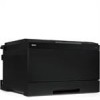Dell 5130 Color Laser User's Guide (PDF) - Page 86
Setting Up for Shared Printing, Installing the Printer Driver
 |
View all Dell 5130 Color Laser manuals
Add to My Manuals
Save this manual to your list of manuals |
Page 86 highlights
3. Select Folder Options. 4. From the View tab, clear the Use simple file sharing (Recommended) check box, and then click OK. 5. Click start® Control Panel. 6. Select Performance and Maintenance. 7. Select Administrative Tools. 8. Click Local Security Policy. 9. Click Local Policies® Security Options. 10. Right-click Network access: Sharing and security model for local accounts and select Properties. 11. Ensure Classic - local users authenticate as themselves is selected. Installing the Printer Driver NOTE: Installation on Windows XP Home Edition, Windows Vista Home Basic, Windows Vista Home Premium, Windows Vista x64 Home Basic, Windows Vista x64 Home Premium, Windows 7 Starter, Windows 7 Home Basic, Windows 7 Home Premium, Windows 7 x64 Home Basic, and Windows 7 x64 Home Premium is not supported. 1. Press Software Installation to launch the installation software. 2. Select Network Installation, and then click Next. 3. Select Remote Installation, and then click Next. a. Enter the computer name, user ID, and password. Then, click Add. b. Click Next. NOTE: In some cases, Windows Security Alert is displayed in this step when you use Windows Vista, Windows Vista 64-bit Edition, Windows Server 2008, Windows Server 2008 64-bit Edition, Windows Server 2008 R2 64-bit Edition, Windows 7, or Windows 7 64-bit Edition. In this case, select Unblock (Allow access for Windows Server 2008 R2 and Windows 7), and then continue the procedure. 4. Select the printer you want to install from the printer list, and then click Next. If the target printer is not displayed on the list, click Refresh to refresh the list or click Add Printer to add a printer to the list manually. You may specify the IP address and port name at this point. NOTE: When using AutoIP, 0.0.0.0 is displayed in the installer. Before you can continue, you must enter a valid IP address. 5. Specify the printer settings, and then click Next. a. Enter the printer name. b. If you want other users on the network to access this printer, select Share this printer with other computers on the network, and then enter a share name that users will easily identify. c. If you want to set a printer as the default, select the Set this printer as default check box. d. If you want to restrict color printing, select the appropriate Dell ColorTrack option. Enter the password when Color-Password Enabled is selected for Dell ColorTrack. 6. Select the software and documentation you want to install, and then click Next. You can specify folders in which to install the Dell software and documentation. To change the folders, click Input. 7. Click Finish to exit the wizard when the Congratulations! screen appears. Use the Dell Printer Configuration Web Tool to monitor the status of your network printer without leaving your desk. You can view and/or change the printer configuration settings, monitor toner level, and when it is time to order replacement consumables, just click the Dell supplies link right from your web browser. NOTE: The Dell Printer Configuration Web Tool is not available when the printer is locally attached to a computer or a print server. To launch the Dell Printer Configuration Web Tool, type the printer's IP address in your web browser, and the printer configuration appears on the screen. You can set up the Dell Printer Configuration Web Tool to send you an e-mail when the printer needs supplies or intervention. To set up e-mail alerts: 1. Launch the Dell Printer Configuration Web Tool. 2. Click E-Mail Alert link. 3. Under E-Mail Server Settings, enter the Primary SMTP Gateway, the Reply Address, and enter your e-mail address or the key operator's e-mail address in the e-mail list box. 4. Click Apply New Settings. NOTE: The SMTP server will display Connection pending until printer sends an alert until an error occurs. Setting Up for Shared Printing You can share your new printer on the network using the Drivers and Utilities CD that shipped with your printer, or using Microsoft® point and print or peer-to-peer method. However, if you use one of the Microsoft methods, you will not have all the features, such as the status monitor and other printer utilities, that are installed with the Drivers and Utilities CD. To share a locally-attached printer on the network, you need to share the printer, and then install the shared printer on network clients:















